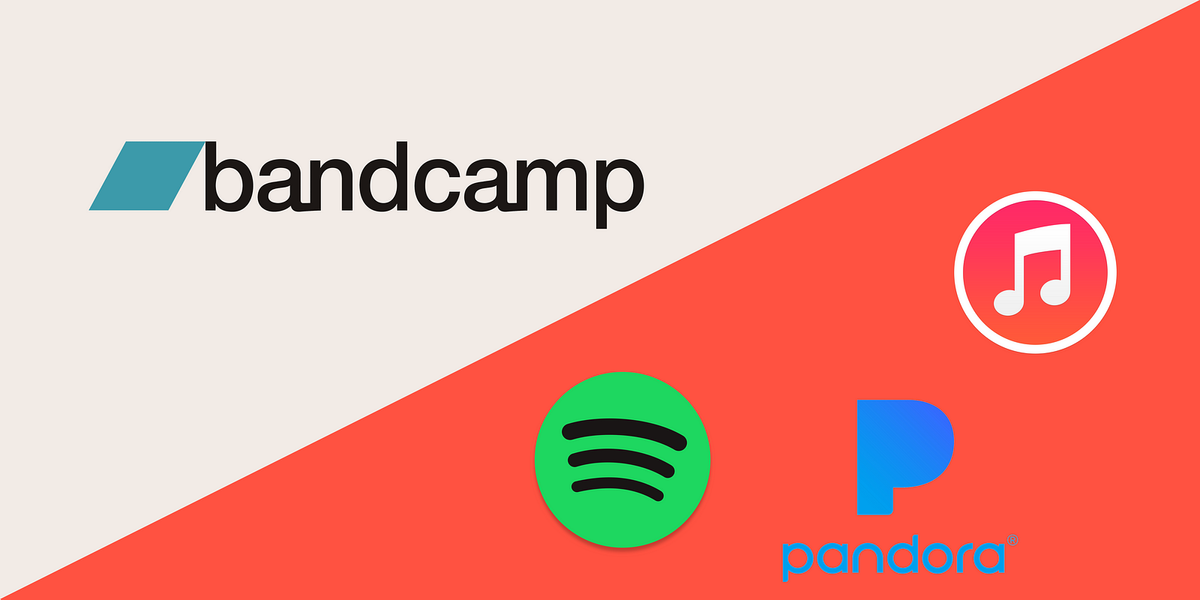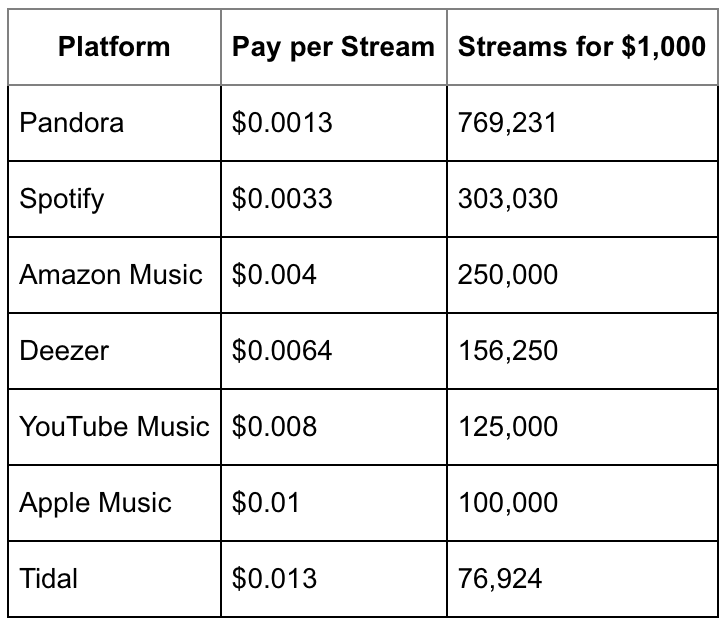Getting The Most Money Out of Your Music in 2024

Direct Sales vs. Streaming Services
We all know how little music streaming services pay their artists, anywhere from $0.0013 per stream like Pandora all the way up to $0.013 like Tidal.
One album sale of $10 dollars is equivalent to ~3000 streams on Spotify 🤯

With the recent news of Spotify putting 1000 streams threshold before it starts paying artists their royalties, you might be thinking “Is it worth it to put my music on streaming platforms? Or should I just sell my music directly to my fans on platforms like Bandcamp?”
(Checkout my video about the Spotify changes at the bottom of this article 👇🏼)
Let’s look at the pros and cons of both and what I recommend you doing to get the most out of your music in 2024.
Streaming Services:
Pros:
- Global Reach: Streaming services provide a vast audience reach, exposing musicians to listeners worldwide.
- Passive Income: Artists earn revenue through streams, allowing for a steady income stream even after the initial release.
- Discoverability: Algorithm-driven playlists and recommendations on streaming platforms can introduce new audiences to an artist’s work.
Cons:
- Low Payouts: Musicians often receive minimal revenue per stream, making it challenging to sustain a livelihood.
- Dependency: Artists rely heavily on streaming platforms, with limited control over pricing and promotions.
- Algorithm Challenges: Breaking through the algorithmic barriers to get discovered can be a daunting task, especially for independent artists.
Direct Sales on Bandcamp:
Pros:
- Higher Revenue Share: Bandcamp offers a more favorable revenue share, allowing artists to retain a more significant portion of their earnings.
- Direct Fan Connection: Selling on Bandcamp fosters a direct relationship between artists and fans, building a loyal community.
- Creative Control: Musicians have greater control over pricing, merchandising, and release strategies, enabling them to experiment with different approaches.
Cons:
- Limited Exposure: While Bandcamp has a dedicated user base, the platform may not offer the same level of exposure as major streaming services.
- Marketing Challenges: Musicians bear the responsibility of driving traffic to their Bandcamp page, which can be demanding without a strong online presence.
- Instant Gratification: Unlike streaming, where listeners can instantly access music, the direct sales model might require additional steps before you can access the music (Purchasing, downloading, etc)
Strategy
Now that we know the pros and cons of Streaming vs Direct Sales, here is what I recommend: USE BOTH!
In order to use both effectively you have to understand that every musician has 2 types of fans:
- Die-hard fans that would buy and collect everything you put out
- Passive fans; those who don’t necessarily buy everything from you but they’ll listen to your music on streaming services, radios, and music playlists.
For many musicians, finding the right balance between streaming services and direct sales is crucial so here is a simple strategy you can follow:
- Release your album on Bandcamp first with a minimum price and the option for fans to pay what they want
- Release the album on streaming platforms 2 weeks later using a distributor like Distrokid (You can get a discount using my affiliate link HERE)
To incentivize your fans to purchase your album early from Bandcamp I would offer perks like, exclusive tracks, merch, CDs & Vinyls, etc
With this strategy you can take advantage of direct sales and building a close connection with your fans on Bandcamp in addition to the exposure and discoverability you get from the streaming services.
In conclusion, the music industry’s changing dynamics allow musicians to rethink their distribution channels. While streaming services offer global reach and passive income, the shift towards direct sales on platforms like Bandcamp empowers artists with higher revenue, creative control, and a more intimate connection with their fan base. Ultimately, the key lies in a thoughtful combination of both approaches, enabling musicians to navigate the modern music landscape successfully.